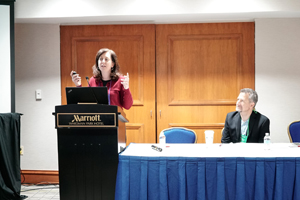
Over 90,000 students attend the University of Toronto and there are 26 academic divisions, each with its own registrars with their own enrollment responsibilities.
Starting in starting in 2012, there was a growing understanding that data is valuable, so the institution set out to use data to develop a 360 degree view of their students. To help build that complete view of the students, they examined high school-->admissions-->course enrollment-->curricular activities. They supplemented this with graduation and retention rates.
The software
They began pulling information using project management software like JIRA, storage software (IBM DB2 Blu), data analytics (SQC queries) and ETL, an information power center. The team examined the power of data, and where to focus their efforts. For example, to gather data on admissions, they examined grades; for financial aid they look at the yield on scholarships. For business purposes they looked at the demand for data from stakeholders.
The teams
The institution used a hybrid team of IT and non-IT to examine business use and functionality. They used the business intelligence from the non-IT team to tweak and enhance their week long agile crash course. Their IT team, composed of a data architect, database admin, and analyst would then develop the methodology for data gathering.
The process
First they would identify the subject. In sprint 0 (the first phase), they would do “story gathering” to ask who, what and why. They then architect the data repository, or designing data marts to support data that answers the user stories. This continues for as long as you need to build that complete student view.
Lessons learned
1.
Timing is everything. For example, if you're about to switch student systems, it's not a time to undertake a project like this.
2.
Be aware of competing priorities. Will non-IT staff have time for this project?
3.
Data is never clean. Processes change over time, so have a healthy suspicion of your data.
Learn more. Download the session PDF.